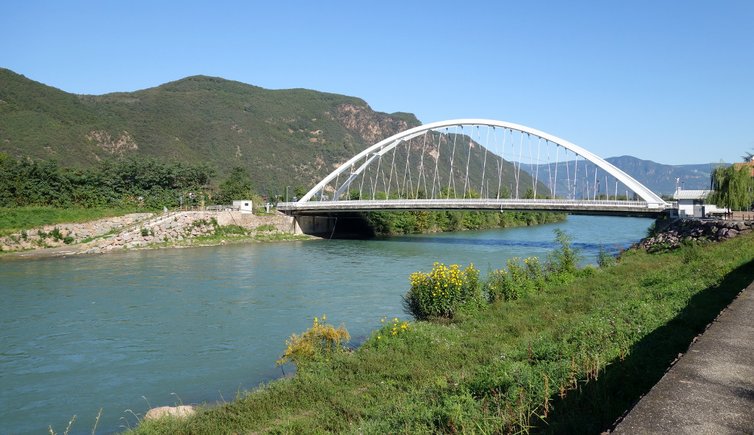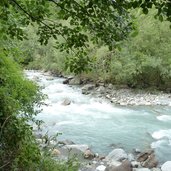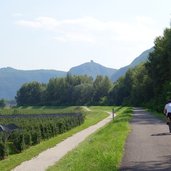The longest river of South Tyrol and the second longest of Italy has its origins in the Ötztal Alps above the Resia Pass
Image gallery: Adige river
The Adige river (Etsch, in German - Adige, in Italian) origins at 1,550 m a.s.l. in a forest above the village of Resia (Reschen) in the Val Venosta valley. Featuring a length of 415 km, this second longest river of Italy after the Po and the longest one of South Tyrol crosses first Lake Resia and Lake San Valentino alla Muta, flows through the Val Venosta valley and reaches the Merano basin, where it joins the Passiria river. It continues its way to the capital of the region, Bolzano, where it flows together with the Isarco river and takes a southerly course.
In former times, the Adige river was considered navigable from here and one of the major trade routes between the cold north and the sunny south followed its course. Having passed the Oltradige area, the Bassa Atesina area and the southernmost village of South Tyrol, Salorno, the river proceeds to Verona and finally to the place, where many South Tyroleans spend their holidays: the Adriatic sea, where the Adige river confines the Po delta towards north.
Its water quality level ranges from class 1 (between San Valentino alla Muta and Glorenza) and class 3 (before Merano). After 1869, the Adige river was slowly straightened, a process which has been gradually reversed in recent years. The flood risks resulted in the construction of a 10 km long tunnel in the southern Trentino, the Mori-Torbole Tunnel, which allows to reduce water levels upstream by draining excess water into Lake Garda. By the way: The Adige Cycle Route between Resia and Verona follows largely the course of the river. The tour can be divided as the cycle path leads through numerous places with train connections. The Adige river inspired also various composers, e.g. Felice Carena to the concert waltz "The Secrets of the Adige" (1932).





























